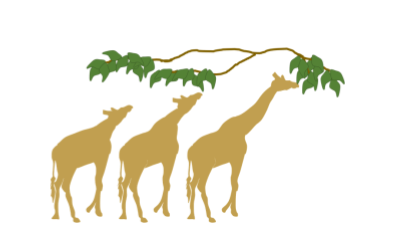Epigenetics
Objectives
- Recognize that gene expression can change in different cell types over time and in response to changing conditions.
- Define epigenetics.
- Explain how modification of histone proteins affects gene expression by remodeling chromatin.
- Explain how DNA methylation affects gene expression.
- Describe examples of how epigenetics influences human phenotypes and behavior.
Introduction

In the history of science, Jean Baptiste Lamarck, an early evolutionary biologist, is often treated as an aside or a footnote. Although he, like Charles Darwin, proposed that the diversity of species on earth arose because of evolution, Lamarck proposed a very different mechanism from Darwin’s natural selection. You may recall that Darwin proposed that species evolved because, in any heterogenous population, certain individuals were more “fit” and thus more likely to reproduce and pass their genetic information on to the next generation. Over time, less advantageous variations were outnumbered in the population in a manner called “natural selection”. Thus future generations evolved to resemble the most fit individuals.
The underlying principle of Darwinian evolution depends on the variation inherent in any population. Today, we know that variation arises in a population due to random mutations, some of which might be advantageous (and be selected for) and some of which might not (and be selected against).
Lamarck, in contrast, proposed that individuals within a population vary because of traits acquired during their lifetime. The classic example of the Lamarckian hypothesis is the evolution of long-necked giraffes: because a giraffe might have to reach its neck to eat leaves on a high tree, its neck would become stretched. And that giraffe would pass its longer, stretched neck to its offspring. (Figure 1) To use a more modern example: this would be like saying that your kids would be born understanding Genetics since you, their parent, had studied it.
We know now that this is not how evolution works. But Lamarck’s work did get one thing right: in some cases, our children do inherit traits that we acquire during our lifetime. Our behavior and environment can have long-term effects on gene expression, linked with changes in chromatin structure. Those changes can influence traits over the course of a lifetime and even, in some cases, be inherited by offspring.
The mechanism by which we pass acquired traits to our children is not due to typical Mendelian inheritance. Instead, this inheritance is dependent on mechanisms outside of or on top of the rules of genetics we’ve discussed so far. The mechanism has thus been named epigenetic inheritance. A closer look reveals that epigenetic inheritance results from the regulation of gene expression through changes in chromatin structure that are transmitted to daughter cells during cell division.
In this module, we discuss epigenetic changes to chromatin that affect gene expression. In this module, we look at three specific molecular modifications, or epigenetic marks: histone acetylation, histone methylation, and DNA methylation.
Those epigenetic modifications are heritable through mitosis, so individual somatic cells can share epigenetic marks with other cells of the same lineage – meaning, other cells that came from the same parent cell during development. This type of epigenetic inheritance influences cell fate during the early development of multicellular organisms as well as certain complex genetic phenotypes, including obesity and cancer. In some cases, epigenetic modifications are also maintained through meiosis (so epigenetic marks can be shared from parent to offspring). Inter-generational epigenetic inheritance is linked with cardiovascular disease and stress response in humans and other mammals and other complex phenotypes.
Collectively, the combination of epigenetic marks found in a cell is called the epigenome.
Media Attributions
- Giraffes

